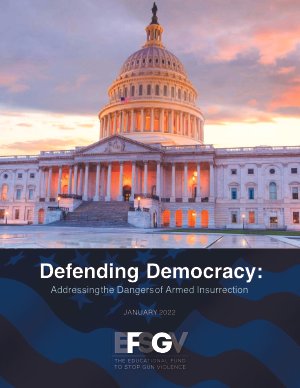By Moonshot and the Anti-Defamation League
Moonshot partnered with the Anti-Defamation League (ADL) to analyze US search traffic in July 2020 in response to the threats posed by white supremacist narratives and ideology in the US this past year. The dominant socio-political events of 2020-2021—the COVID-19 pandemic, the widespread BLM protests and counter-protests, and the presidential election—coalesced to create fertile ground for white supremacists and other violent extremist movements to mobilize and recruit. In 2020, racism and systemic racial inequality took center stage in the American public eye, with nationwide mass protests against recent police killings of Black people and historic evidence of racial injustice.1 In a nationwide reactionary mobilization, members of armed extremist groups made frequent appearances at BLM protests as self-appointed “protection” for property and counter-protesters.2 This high-profile direct action, combined with tacit and explicit support from local and national political figures, contributed to an increased interest in white supremacist and racist ideas by segments of the country.3 Protests and opposition to state lockdowns and other measures introduced in response to COVID-19 also provided opportunities for extremist movements to mobilize and engage with wider swathes of the public around shared grievances. While anti-lockdown protests were not related to white supremacy on the surface, these movements began to overlap in their joint opposition to the BLM movement, the defense of Confederate monuments, and general opposition to perceived government tyranny.4 Similarly, national protests alleging election rigging in the wake of Joe Biden’s presidential election victory were repeatedly co-opted and reinforced by white supremacist groups, culminating in the 6 January siege on the US Capitol. Extremist groups and individuals expressing support for white supremacist ideas were well-documented participants in the insurrection. White supremacist groups and other extremist organizations seized on the tensions and uncertainty in American life to promote racist beliefs and anti-Semitic conspiracy theories in order to increase their recruitment. Extremist narratives related to the pandemic promoted the conspiracy theory alleging that COVID-19 is a hoax created by a Jewish-led cabal. This and related anti-Semitic tropes and conspiracies are mainstays of many QAnon narratives.5 Other groups, such as the Patriot Front, have used the past year’s societal upheavals to recruit new members by promoting an impending race war and the perceived persecution of white people—as indicated by conspiracy theories such as “white genocide” and “the great replacement”.6 Extremist groups also exploited wider tensions, perceived grievances and disinformation against the BLM movement, as well as popular disinformation alleging the election was rigged. The findings from this project provide valuable insights on the types of harmful narratives and content that appeal to individuals potentially at-risk of radicalization, including those first searching for extremist slogans and conspiracies out of curiosity. This report presents an overview of the search traffic data collected during the project, between 17 July 2020 - 7 March 2021, and our main findings on online white supremacist narrative trends during this time.
Washington, DC: Moonshot, 2021. 21p.




















